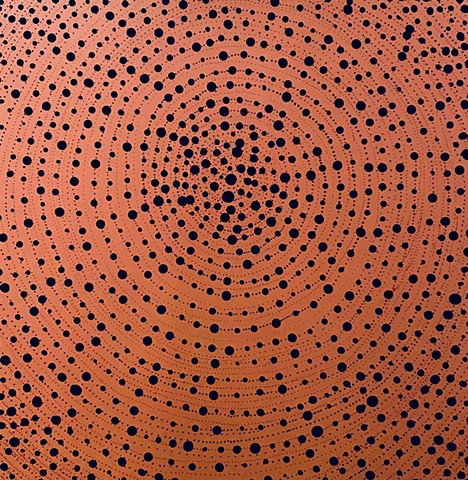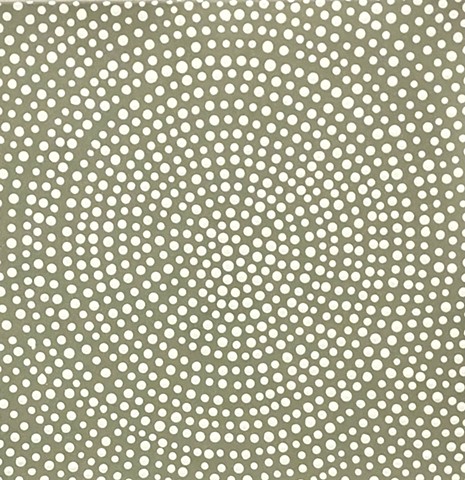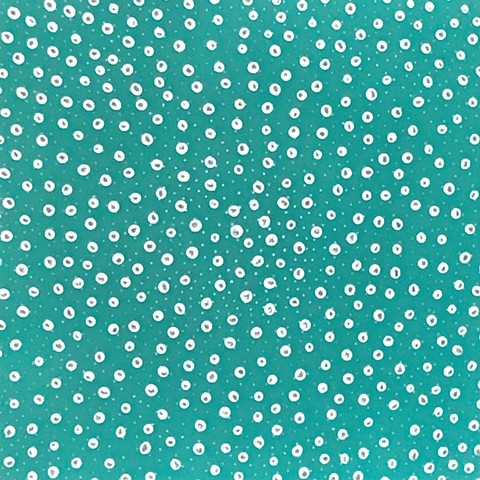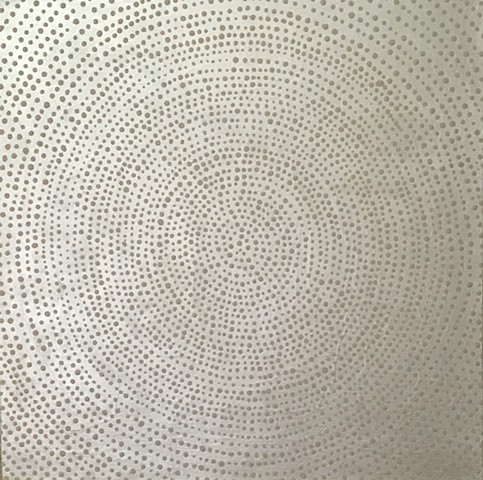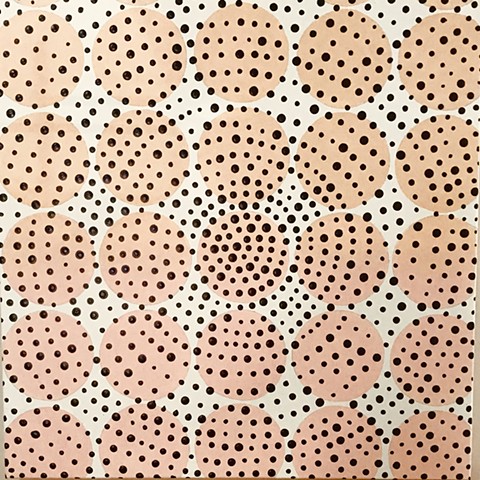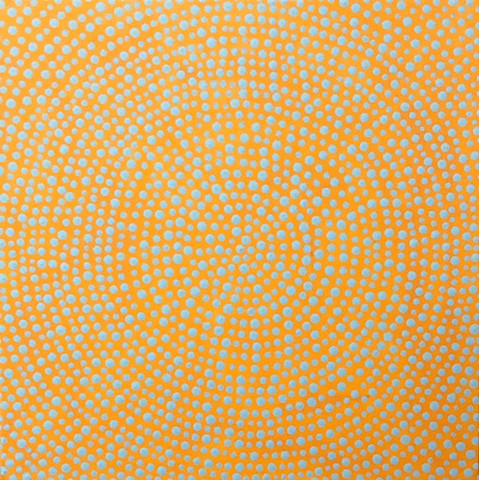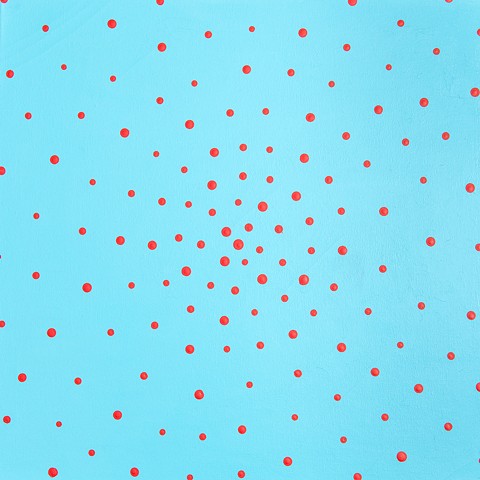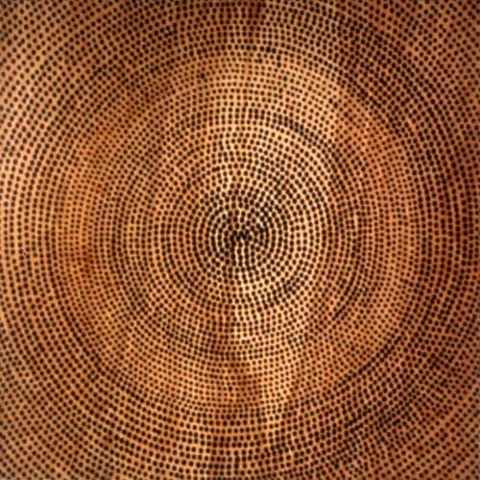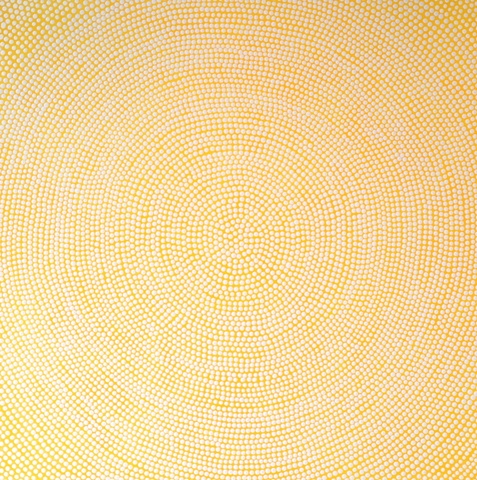cosmos
What I'm dealing with is space and proportion, and the idea of pulling a person inside of that. It's about meditation. I hope that people may get a picture of feeling, of being more centered. When I use bright, contrasting colors, I hope people will find them soothing, peaceful, and contemplative. It's not my conscious mind at work here, it's my unconscious. I lose myself in the process. I'm usually not aware of what I'm doing. I just feels right at the time. What painters are trying to do, in the short and long run, is to allow you to visit a part of themselves internally that society in its usual conventions may not allow you to visit. But painting is not about ego. It's about the absence of ego.
Please go to art/archive to see other pieces in this series that have been placed in collections.
Commissions are available in various sizes (all square).
You select the colors- one color for the field, one color for the dots.
"Whether he is tracing a particular mood on a certain day or meditating on painting's connection to a larger framework, Coffelt takes pleasure in his undertaking. Banana Fingerprint Cosmos proposes the possibility that the painter may indeed leave a significant trace of his creative activity. The image that Coffelt produces in his dot-populated Cosmos paintings rhymes with Larry Poons's ellipses, Ross Bleckner's celestial vaults and the patterns of Australian aboriginal textiles-an arc of reference that we trace across historical movements and diverse cultures. As quickly as we summon reference, however, we are arrested with the delicate beauty of the surface and the touch of the artist's own fingertips, pressed onto the pigmented surface imbued with its own identity-Coffelt's cosmos."
-David Moos, contemporary curator AGO, Toronto Ontario CN
"Jon Coffelt's abstract paintings belong to a long tradition of art as an object of meditation. 'Satori,' the title of the Tennessee native's show at Solomon Projects, is a Zen Buddhist term for a state of enlightenment. 'Clay Cosmos on Raspberry Mousse Field,' 60 inches square, consists of hundreds of little putty-colored dots in concentric circles on a reddish field. Patterns emerge and submerge in this welter of dots, whose contemplation does induce some sort of contemplative state. The dots bring to mind Australian aboriginal paintings, as well as the repetition of minimalist artists such as Dorothea Rockburne and Annette Cone-Skelton."
-Catherine Fox, "The art of enlightenment," Atlanta Journal Constitution








